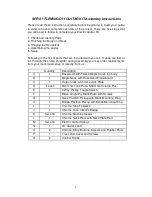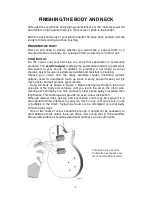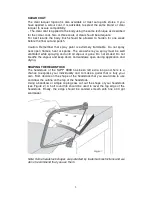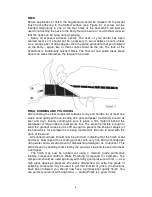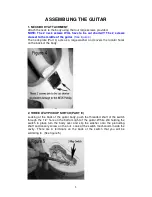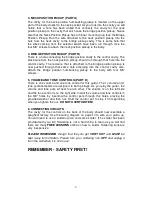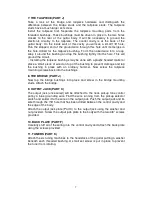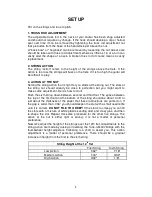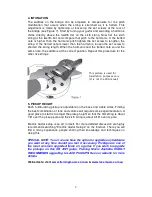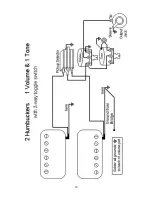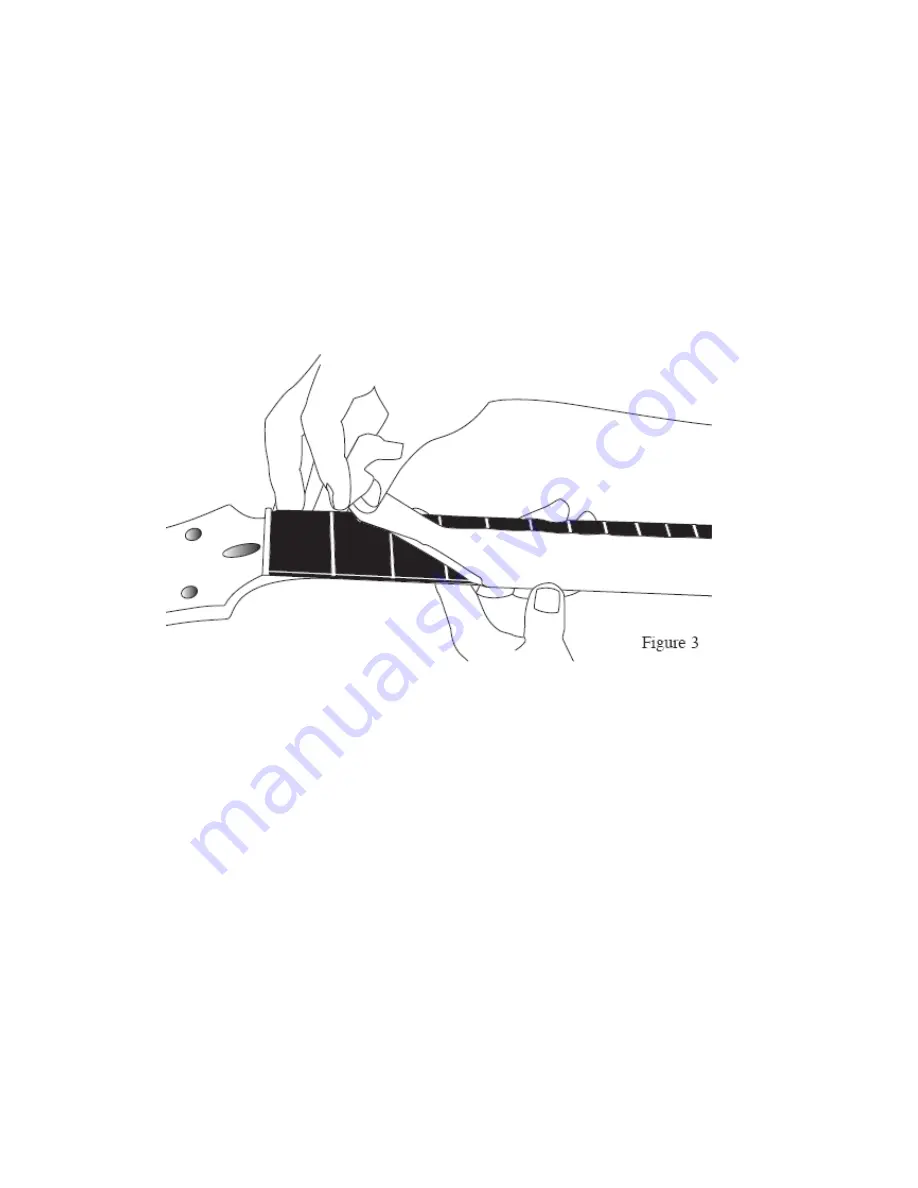
4
NECK
Before application of finish, the fingerboard should be masked off to prevent
finish from adhering to the fretted surface (see Figure 3). A screw can be
inserted temporarily in one of the four holes at the heel which will later be
used for attaching the neck to the body. Secure a wire or cord to that screw so
that the neck can be hung during spraying.
- Spray all exposed surfaces evenly. The neck of your Guitar has been
sanded level so it should not be necessary to sand between coats unless
runs, orange peel or drips appear. Use the same procedure that you followed
on the body – again, two or three coats should do the job. The face of the
headstock is traditionally finished black. The final cut and polish takes place
about one week later when the lacquer has cured.
FINAL RUBBING AND POLISHING
After allowing the clear lacquered surfaces to dry and harden for at least one
week, sand lightly with non-loading 400 grit sandpaper (commonly known as
“wet and dry”). During sanding be sure to place a firm material behind the
sandpaper. A large rubber eraser works fine. The eraser is flexible enough to
sand the gradual curves but is stiff enough to prevent the sharper edges (of
the headstock, for example) from being rounded off. Be sure to sand with the
grain of the wood.
- All sanded surfaces should now be a bit dull, indicating that the finish is flat
and level. Now repeat the sanding process with very fine 600 grit sandpaper
using water and a small amount of dishwashing detergent as a lubricant. This
will remove any sanding marks left by the previous step and leave all surfaces
a dull gloss.
- The finish may now be rubbed out using a medium grade automotive
rubbing compound (DuPont White Polishing Compound for example). The
compound should be used sparingly with fairly good pressure at first –– as a
high gloss develops, pressure should be diminished. An extra fine grade of
polishing compound may be used to get that final bit of gloss. If instructions
have been followed you should now have a professional quality finish. You
can protect your work with a light wax –– Guitar Polish is a good choice.
Summary of Contents for SPR01
Page 11: ...10...


